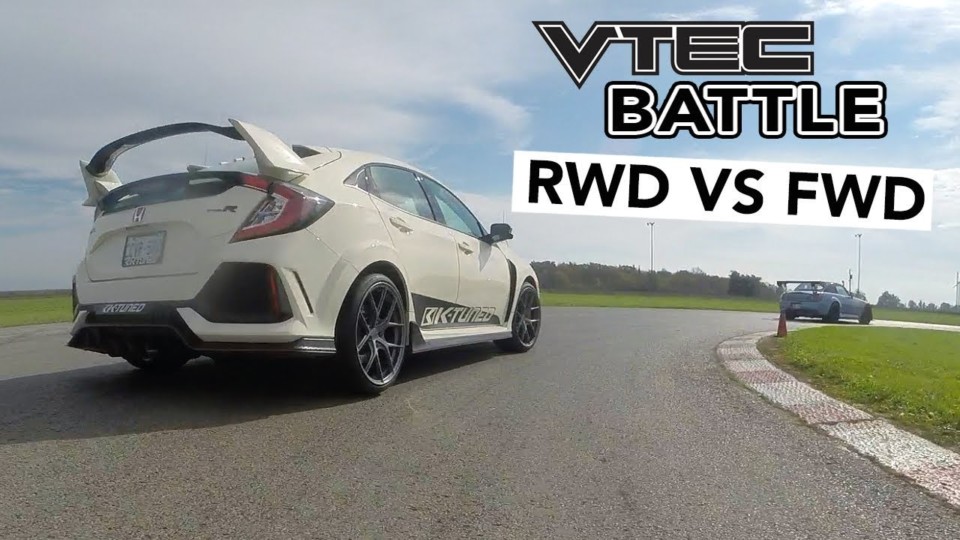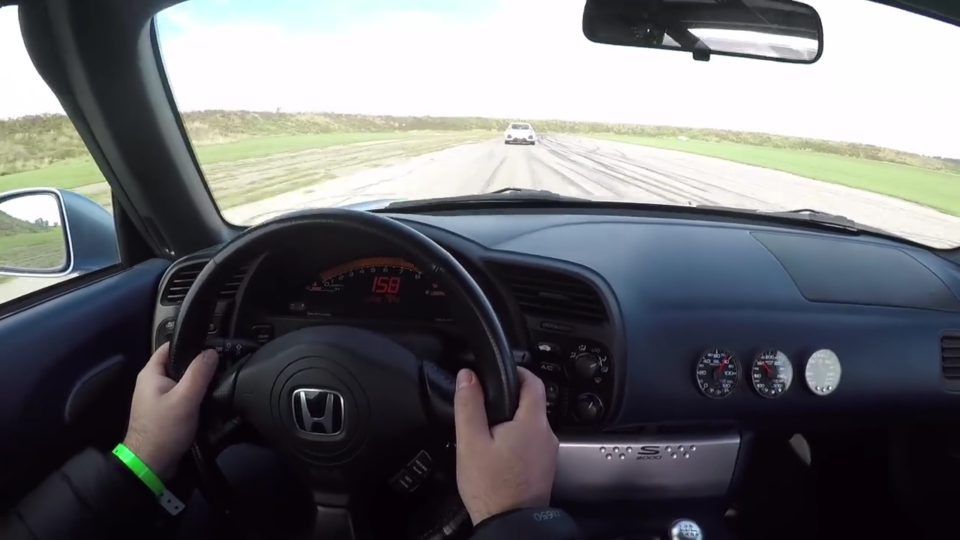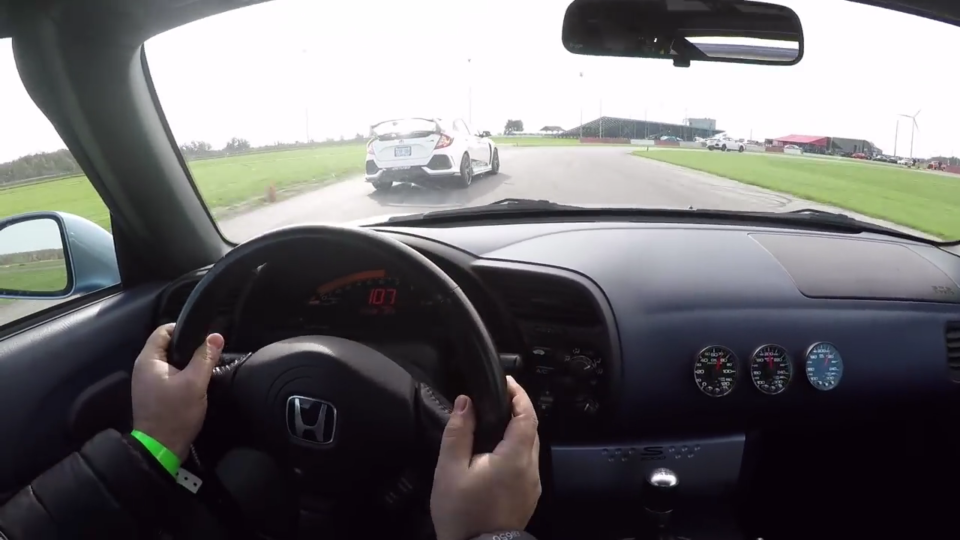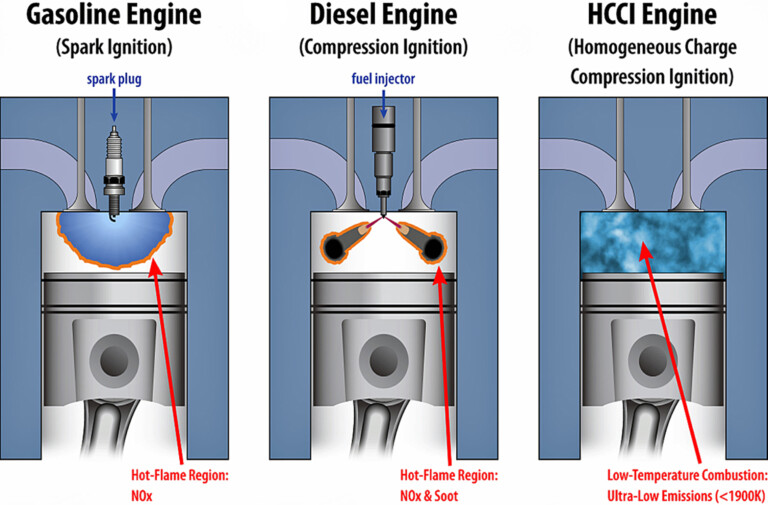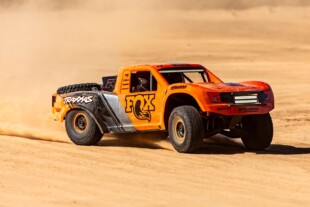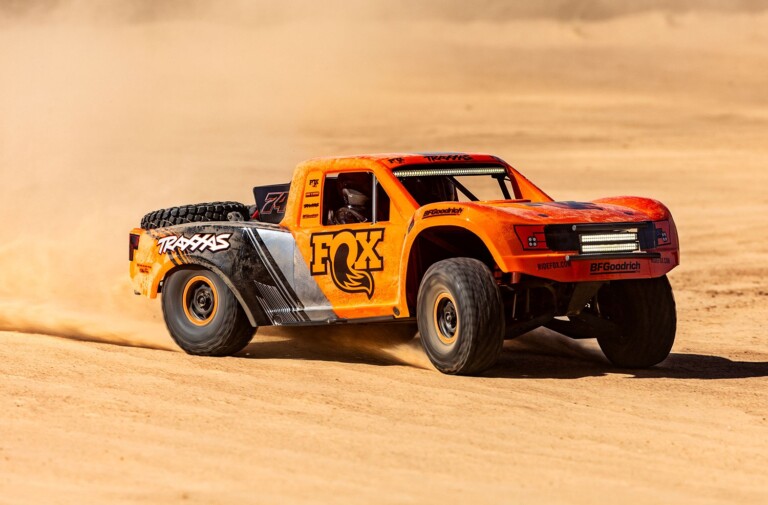Take two of Honda’s greatest track cars. Both different in a few ways. Normally-aspirated versus turbocharged. Rear-wheel drive versus front-wheel drive. And with two decades differentiating these cars, quite the difference in ride, refinement, and fit-and-finish. Fortunately, the older car is also the focused track tool. Comparing that against a mildly modified modern car, the battle is both fair and varied enough to be interesting.
KTuned’s Civic Type R benefits from its downpipe, its 3-inch stainless steel exhaust system, for somewhere over 300 horsepower at the wheels. The suspension enjoys KTuned’s lowering springs and Titan 7 wheels wrapped in Continental Extreme Contact Sport tires. With a few choice modifications, this FK8 is even more accurate and manageable, but it is, at the end of the day, largely a stock car.
The S2000, on the other hand, has the full gamut. It’s a well-sorted track toy with every department addressed and holds its own against much more powerful cars — in the corners at least. It runs the same tires as the FK8, even the same width, but it’s undeniably the more focused of the two with Recaro seats, Eibach coilovers, aerodynamic additions, and roughly 240 horsepower at the wheels.
Where the turbocharged Civic’s torque can keep it ahead of the scalpel-like S2000, it is dominant. The delivery is linear and the turbocharger responds instantaneously. The difference in power and torque is obvious, and at the end of the straight, the Civic’s turbo power pushes it ahead by six car lengths, easily.
However,the S2000’s agility more than compensates at the twisty and patience-testing Toronto Motorsports Park. To capitalize on the already-famous handling, the Speed Academy wizards installed:
- 17×9-inch Gram Light57Xtreme wheels
- Hankook Ventus RS-3 tires
- Eibach Multi-Pro R2 coilovers
- Eibach swaybars
- Stoptech Sport Brakes (including rotors, pads, lines, and fluid)
- Buddy Club USA hardened suspension bushings
The weight, balance, and stability of the S2000 — particularly at higher speeds — help it claw back the lead achieved by the Civic’s impressive K20C1 motor. When Pete (driving the Civic) over-commits to Toronto’s Turn 1 and loses the rear, David is able to engage the tractor beam and reel him in while looking fairly calm. The turn-in is so much sharper and more predictable, so David doesn’t have to take as wide of a line as Peter to get a smooth and satisfactory exit in the most technical sections of the course. It should be mentioned that trackday tweaks like a sorted chassis and body-hugging seats do inspire confidence, too.
Braking performance is quite strong in both camps, which is surprising considering the Civic is running stock Brembos. It has to be said that Peter is pushing visibly harder, so while his braking distances are similar, he has a tendency to lose the car slightly as he releases the brakes. Note the Civic’s dramatic body language and fidgeting on the first lap, and how it is slightly tougher to get it turned in cleanly.
The differentiating factor throughout most of TMP seems to be drivetrain layout. With this much torque and two times the taxing of the front tires, patience is paramount in the Civic. Too much throttle before the wheel is straight, and Peter easily lights up the driven wheels. That understeer limits his efforts, and forces Peter to take somewhat dramatic lines through the tighter stuff in order to late-apex and drive around the traction deficiency, while David can rely on the S2000’s nimbleness and lack of torque to exit neatly, repeatably, and without wheel spin.
The Civic is incredibly good for a car that’s hardly touched with aftermarket pieces. When it’s straightened well at the apex, it can launch off the corner at twice the rate of the S2000, easily!
The outcome is strikingly close. The tried-and-true S2000 nets a 1:20.63, while the Civic snags a 1:21.1. Half of a second between these two very different members of the VTEC tribe isn’t too much, and with a few more modifications, I reckon the turbocharged Civic would sail off down the straight and continue its charge when the corners tighten — even at a course as compact and technical as Toronto Motorsport Park.



